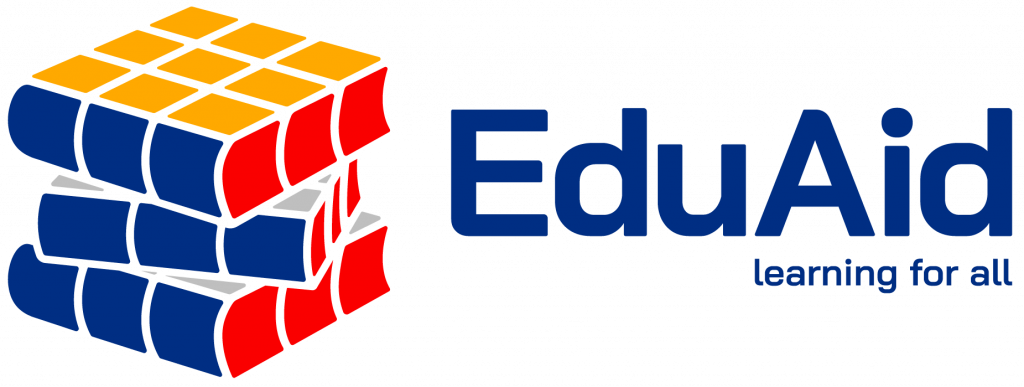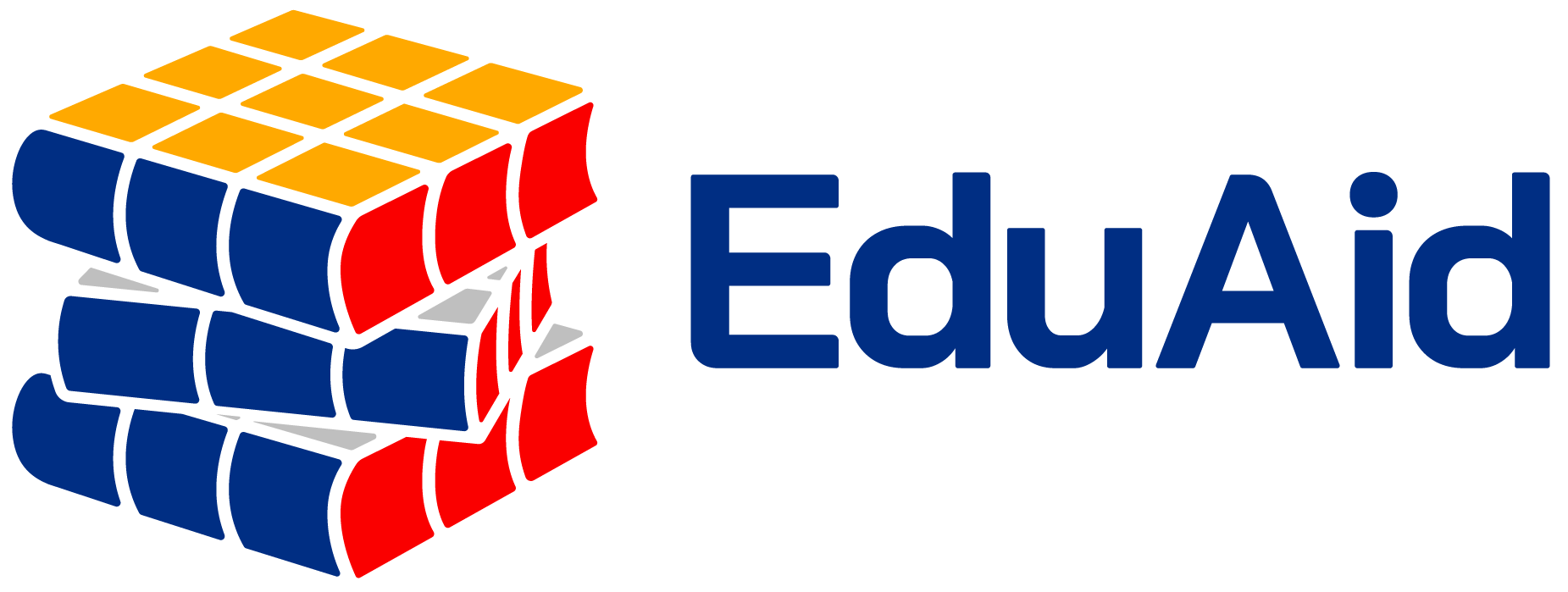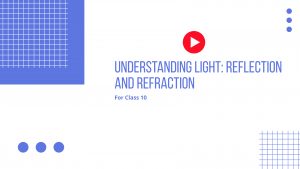NCERT Solutions for Science Class 10 Chapter 1 Copy
NCERT Solutions for Class 10 Chemistry Chapter 1 – “Chemical Reactions and Equations” is curated by senior and experienced teachers of EduAid. Before answering the questions of Chapter 1. This chapter delves into the fascinating world of chemical reactions, helping students understand and master the principles of balancing chemical equations and different types of reactions.
Here are the answers of the questions included in the NCERT book. Before diving deeep into the answers, try to attempt the questions by yourself.
Answer the Following Questions:
1. Why should a magnesium ribbon be cleaned before it is burnt in the air?
Answer: Magnesium is a very reactive metal. When stored, it reacts with oxygen to form a layer of magnesium oxide on its surface. This layer of magnesium oxide is quite stable and prevents further reaction of magnesium with oxygen. The magnesium ribbon is cleaned by sandpaper for removing this layer so that the underlying metal can be exposed to air.
2. Write the balanced equation for the following chemical reactions.
(i) \(Hydrogen + Chlorine → Hydrogen \space{chloride}\)
(ii) \(Barium \space{chloride} + Aluminium \space{sulphate} → Barium \space{sulphate} + Aluminium \space{chloride}\)
(iii) \(Sodium + Water → Sodium \space{hydroxide} + Hydrogen\)
Answer:
(i) \(H_2 + Cl_2\rightarrow2HCl\)
(ii) \(3BaCl_2(s) + Al_2(SO_4)_3(s) → 3BaSO_4(s) + 2AlCl_3(s)\)
(iii) \(2Na(s) + 2H_2O(l) → 2NaOH(aq) + H_2(g)\)
3. Write a balanced chemical equation with state symbols for the following reactions.
(i) Solutions of barium chloride and sodium sulphate in water react to give insoluble barium sulphate and the solution of sodium chloride.
(ii) Sodium hydroxide solution (in water) reacts with hydrochloric acid solution (in water) to produce sodium chloride solution and water.
Answer:
(i) \(BaCl_2(aq) + Na_2SO_4(aq) → BaSO_4(s) + 2NaCl(aq)\)
(ii) \(NaOH(aq) + HCl(aq) → NaCl(aq) + H_2O(l)\)
4. A solution of a substance ‘X’ is used for whitewashing.
(i) Name the substance ‘X’ and write its formula.
(ii) Write the reaction of the substance ‘X’ named in (i) above with water.
Answer:
(i) The substance ‘X’ is calcium oxide. Its chemical formula is \(CaO\).
(ii) Calcium oxide reacts vigorously with water to form calcium hydroxide (slaked lime).
\(CaO(s) + H_2O(l) → Ca(OH)_2(aq)\)
\(Calcium \space{Oxide} \space{(Quick Lime)} + Water → Calcium \space{Hydroxide} (Slaked \space{Lime})\)
5. Why is the amount of gas collected in one of the test tubes in Activity 1.7 double of the amount collected in the other? Name this gas.
Answer: Water contains two parts of hydrogen and one part oxygen. Therefore, during the electrolysis of water, the amount of hydrogen gas collected in one of the test tubes is double than that of the oxygen produced and collected in the other test tube.
6. Why does the colour of copper sulphate solution change when an iron nail is dipped in it?
Answer: When an iron nail dipped in the copper sulphate solution than iron displaces copper from the copper sulphate because iron is more reactive than copper. Therefore the colour of the copper sulphate solution changes.
The reaction involved here is:
\(Fe(s) + CuSO_4(aq) → FeSO_4(aq) + Cu(s)\)
7. Give an example of a double displacement reaction other than the one given in Activity 1.10.
Answer: \(2KBr(aq) + BaI_2(aq) → 2KI(aq) + BaBr_2(aq)\)
8. Identify the substances that are oxidised and the substances that are reduced in the following reactions.
(i) \(4Na(s) + O_2(g) → 2Na_2O(s)\)
(ii) \(CuO(s) + H_2(g) → Cu(s) + H_2O(l)\)
Answer:
(i) Sodium (\(Na)\) is oxidized as it gains oxygen and oxygen gets reduced.
(ii) \(Copper \space{oxide} (CuO) is \space{reduced}\space {to}\space {copper} (Cu) while hydrogen (H_2) gets oxidized to water (H_2O)\).
9. Which of the statements about the reaction below are incorrect?
(a) Lead is getting reduced.
(b) Carbon dioxide is getting oxidised.
(c) Carbon is getting oxidised.
(d) Lead oxide is getting reduced.
(i) (a) and (b)
(ii) (a) and (c)
(iii) (a), (b) and (c)
(iv) all
Answer: (i) (a) and (b)
10. \(Fe_2O_3 + 2Al → Al_2O_3 + 2Fe\)
The above reaction is an example of a
(a) combination reaction.
(b) double displacement reaction.
(c) decomposition reaction.
(d) displacement reaction.
Answer: (d) displacement reaction.
11. What happens when dilute hydrochloric acid is added to iron filings? Tick the correct Answer.
(a) Hydrogen gas and iron chloride are produced.
(b) Chlorine gas and iron hydroxide are produced.
(c) No reaction takes place.
(d) Iron salt and water are produced.
Answer: (a) Hydrogen gas and iron chloride are produced.
12. What is a balanced chemical equation? Why should chemical equations be balanced?
Answer: A reaction which has an equal number of atoms of all the elements on both sides of the chemical equation is called a balanced chemical equation. Chemical reaction should be balanced to follow law of conservation of mass.
13. Translate the following statements into chemical equations and then balance them.
(a) Hydrogen gas combines with nitrogen to form ammonia.
(b) Hydrogen sulphide gas burns in air to give water and sulphur dioxide.
(c) Barium chloride reacts with aluminium sulphate to give aluminium chloride and a precipitate of barium sulphate.
(d) Potassium metal reacts with water to give potassium hydroxide and hydrogen gas.
Answer:
a) \(3H_2(g) + N_2(g) → 2NH_3(g)\)
b) \(2H_2S(g) + 3O_2(g) → 2H_2O(l) + 2SO_2(g)\)
c) \(3BaCl_2(aq) + Al_2(SO4)_3(aq) → 2AlCl_3(aq) + 3BaSO_4(s)\)
d) \(2K(s) + 2H_2O(l) → 2KOH(aq) + H_2(g)\)
14. Balance the following chemical equations.
(i) \(HNO_3 + Ca(OH)_2 → Ca(NO_3)_2 + H_2O\)
(ii) \(NaOH + H_2SO_4 → Na_2SO_4 + H_2O\)
iii) \(NaCl + AgNO_3 → AgCl + NaNO_3\)
iv) \(BaCl_2 + H_2SO_4 → BaSO_4 + HCl\)
Answer:
i) \(2HNO_3 + Ca(OH)_2 → Ca(NO_3)_2 + 2H_2O\)
ii) \(2NaOH + H_2SO_4 → Na_2SO_4 + 2H_2O\)
iii) \(NaCl + AgNO_3 → AgCl + NaNO_3\)
iv) \(BaCl_2 + H_2SO_4 → BaSO_4 + 2HCl\)
15. Write the balanced chemical equations for the following reactions.
(a) \(Calcium\space hydroxide + Carbon\space dioxide → Calcium\space carbonate + Water\)
(b) \(Zinc + Silver\space nitrate → Zinc\space nitrate + Silver\)
(c) \(Aluminium + Copper\space chloride → Aluminium\space chloride + Copper\)
(d) \(Barium\space chloride + Potassium\space sulphate → Barium\space sulphate + Potassium\space chloride\)
Answer:
(a) \(Ca(OH)_2 + CO_2 → CaCO_3 + H_2O\)
(b) \(Zn + 2AgNO_3 → Zn(NO_3)_2 + 2Ag\)
(c) \(2Al + 3CuCl_2 → 2AlCl_3 + 3Cu\)
(d) \(BaCl_2 + K_2SO_4 → BaSO_4 + 2KCl\)
16. Write the balanced chemical equation for the following and identify the type of reaction in each case.
(a) \(Potassium\space bromide(aq) + Barium\space iodide(aq) → Potassium\space iodide(aq) + Barium\space bromide(s)\)
(b) \(Zinc\space carbonate(s) → Zinc\space oxide(s) + Carbon\space dioxide(g)\)
(c) \(Hydrogen(g) + Chlorine(g) → Hydrogen\space chloride(g)\)
(d) \(Magnesium(s) + Hydrochloric\space acid(aq) → Magnesium\space chloride(aq) + Hydrogen(g)\)
Solution :
(a) \(2KBr (aq) + Bal_2(aq) → 2Kl(aq) + BaBr_2(s)\)
Type : Double displacement reaction
(b) \(ZnCO_3(s) → ZnO (s) + CO_2 (g)\)
Type : Decomposition reaction
(c) \(H_2 (g) + Cl_2 (g) → 2HCl(g)\)
Type : Combination reaction
(d) \(Mg (s) + 2HCl (aq) → MgCl_2 (aq) + H_2 (g)\)
Type : Displacement reaction
17. What does one mean by exothermic and endothermic reactions? Give examples?
Solution :
Exothermic reactions : Those reactions in which heat is evolved are known as exothermic reactions. An exothermic reaction is indicated by writing “ + Heat”on the products side of an equation.
Example :
(i) \(C (s) + O_2 (g) \rightarrow CO_2 (g) + Heat\)
(ii) \(N_2 (g) + 3H_2 (g) \rightarrow 2NH_3 (g) + Heat\)
Endothermic reactions : Those reactions in which heat is absorbed are known as endothermic reactions. An endothermic reaction is usually indicated by writing “Heat” on the product side of a chemical equation.
Examples :
(i) \(C (s) + 2S (s) → CS2 (l) – Heat\)
(ii) \(N_2 (g) + O_2 (g) → 2NO(g) – Heat\)
18. Why is respiration considered an exothermic reaction? Explain?
Solution :
Energy is required to support life. Energy in our body is obtained from the food we eat. During digestion, large molecules of food are broken down into simpler substances such as glucose. Glucose combines with oxygen in the cells and provides energy. The special name of this combustion reaction is respiration.
Since energy is released in the whole process, it is an exothermic process.
\(C_6H_{12}O_6 (aq) + 6O_2(g)\)
19. Why are decomposition reactions called the opposite of combination reactions? Write equations for these reactions?
Solution : I
Combination reaction is said to be the reaction between two or more molecules to form a larger molecule; whereas the decomposition reaction is defined as the splitting of larger molecules into two or more smaller molecules. This essentially explains that the decomposition reaction is the opposite of the combination reaction.
In most of the cases the decomposition reaction is endothermic since heat from the surrounding or induced heat is used to break the bonds of the larger molecule. Few examples of decomposition reactions are:
\(ZnCO_3 → ZnO + CO_2\)
\(CaCO_3 + Energy → CaO + CO_2\)
\(2HgO → 2Hg + O_2\)
20. Write one equation each for decomposition reactions where energy is supplied in the form of heat, light or electricity.
Solution :
(a) Decomposition reaction where heat is supplied for energy: Thermal decomposition
\(CaCO_3 (Heat) ⟶ CaO + CO_2\)
A thermal decomposition reaction can be defined as a decomposition reaction which is activated by thermal energy.
(b) Decomposition reaction where electricity is supplied for energy: Electrolytic decomposition
\(2H_2O(l) ⟶ 2H_2(g) + O_2(g)\)
An electrolytic decomposition reaction is a type of decomposition reaction that in the form of electrical energy, provides the activation energy for decomposition
(c) Decomposition reaction where light is supplied for energy: Photo decomposition
\(2H_2O_2⟶ 2H_2O + O_2\)
Photolysis or photodecomposition reaction is defined as the decomposition of substances on exposure to light, while photo-oxidation is the oxidation of a substance on exposure to light. Irradiation of tryptophan with UV light results in the formation of a tryptophan radical and a hydrated electron.
21. What is the difference between displacement and double displacement reactions? Write equations for these reactions?
Solution :
A displacement reaction is the one when a more reactive substance displaces a less reactive one from its salt solution whereas a double displacement reaction is the one where a mutual exchange of ions happens between two compounds.
In a displacement reaction, only a single displacement takes place whereas in the double displacement reaction, as the name suggests two displacement takes place between the molecules.
Example:
Displacement reaction
\(Mg + 2HCl → MgCl_2 + H_2\)
Double displacement reaction
\(2KBr + BaI_2 → 2KI + BaBr_2\)
22. In the refining of silver, the recovery of silver from silver nitrate solution involved displacement by copper metal.
Write down the reaction involved?
Solution :
\(Cu(s) + 2AgNO_3(aq) → Cu(NO3)_2(aq) + 2Ag(s)\)
23. What do you mean by a precipitation reaction? Explain by giving examples.
Solution :
When two solutions containing soluble salts are combined, a double displacement reaction takes place in which the ions are exchanged between the compounds. When one of such compounds formed is in solid form (that is insoluble in aqua) then it settles down at the bottom of the container. This solid is known as the precipitate and the respective reaction is termed as the precipitation reaction. Few examples of precipitation reactions are:
\(CdSO_4(aq) + K_2S(aq) → CdS(s) + K_2SO_4(aq)\)
\(2NaOH(aq) + MgCl_2(aq) → 2NaCl(aq) + Mg(OH)_2(s)\)
24. Explain the following in terms of gain or loss of oxygen with two examples each.
(a) Oxidation
(b) Reduction
Solution :
(a) Oxidation is the gain of oxygen. For example:
(i) \(CO_2 + H_2 ⟶ CO + H_2O\)
(ii) \(2Cu + O_2 ⟶ 2CuO\)
In equation (i) \(H_2\) is oxidized to \(H_2O\) and in equation (ii) \(Cu\) is oxidised to \(CuO\).
(b) Reduction : Reduction- addition of hydrogen or removal of oxygen in a chemical reaction is called oxidation reaction. For example
\(ZnO + C → Zn + CO,\) \(ZnO\) is reduced to \(Zn\).
\(CuO + H_2 → Cu + H_2O\), \(CuO\) is reduced to \(Cu\).
25. A shiny brown coloured element ‘X’ on heating in air becomes black in colour. Name the element ‘X’ and the black coloured compound formed.
Solution :
The brown coloured element ‘X ‘ is copper. On heating in air it forms copper oxide, which is black in colour.
\(2Cu(s) + O_2 → 2CuO\)
Brown (from air) Black
26. Why do we apply paint on iron articles?
Solution :
We apply paint on iron articles to prevent rusting. Iron articles do not come in contact of atmospheric oxygen and moisture and thus the rusting is prevented.
27. Oil and fat containing food items are flushed with nitrogen. Why?
Solution :
Nitrogen is an inert gas and does not easily react with these substances. On the other hand, oxygen reacts with food substances and makes them rancid.
Thus, bags used in packing food items are flushed with nitrogen gas to remove oxygen inside the pack. When oxygen is not present inside the pack, rancidity of oil and fat containing food items is avoided.
28. Explain the following terms with one example each.
(a) Corrosion
(b) Rancidity
Solution :
(a) Corrosion : Corrosion is defined as a process where materials, usually metals, deteriorate as a result of a chemical reaction with air, moisture, chemicals, etc.
For example, iron, in the presence of moisture, reacts with oxygen to form hydrated iron oxide.
\(4Fe + 3O_2 + nH_2O ⟶ 2Fe_2O_3,\) \(nH_2O\)
(b) Rancidity : The condition produced by aerial oxidation of fats and oils in foods marked by unpleasant smell and taste is called rancidity.
Rancidity spoils the food materials prepared in fats and oils which have been kept for a considerable time and makes them unfit for eating.
Rancidity can be prevented by adding anti-oxidants to foods containing fats and oils. It can also be prevented by flushing fat and oil containing foods with nitrogen before sealing.
Study materials
- Refernce Books
- NCERT Solutions
- Syllabus







